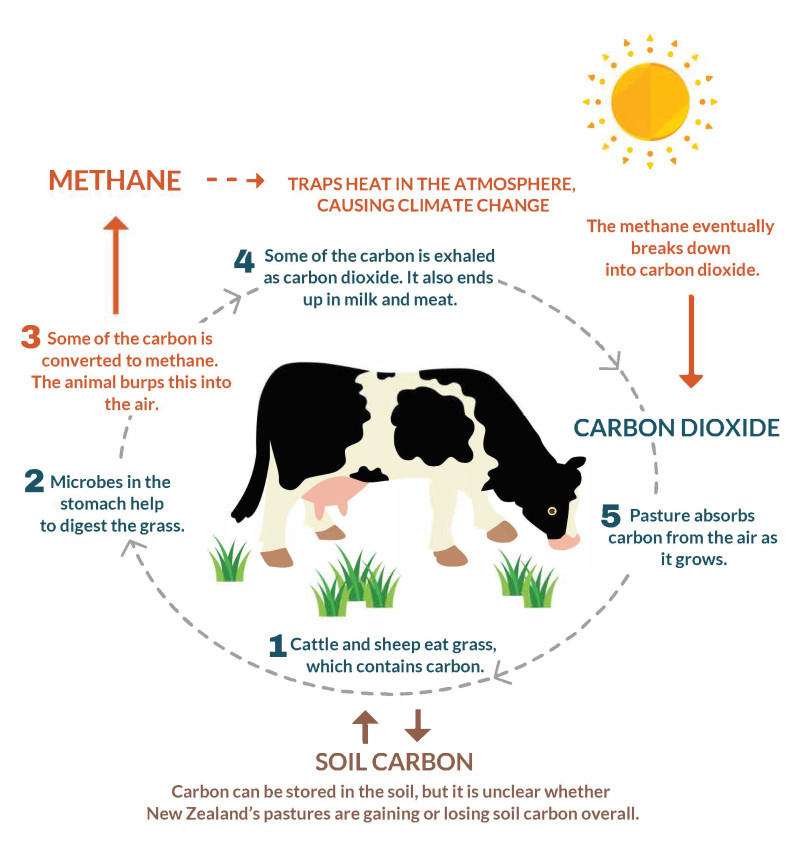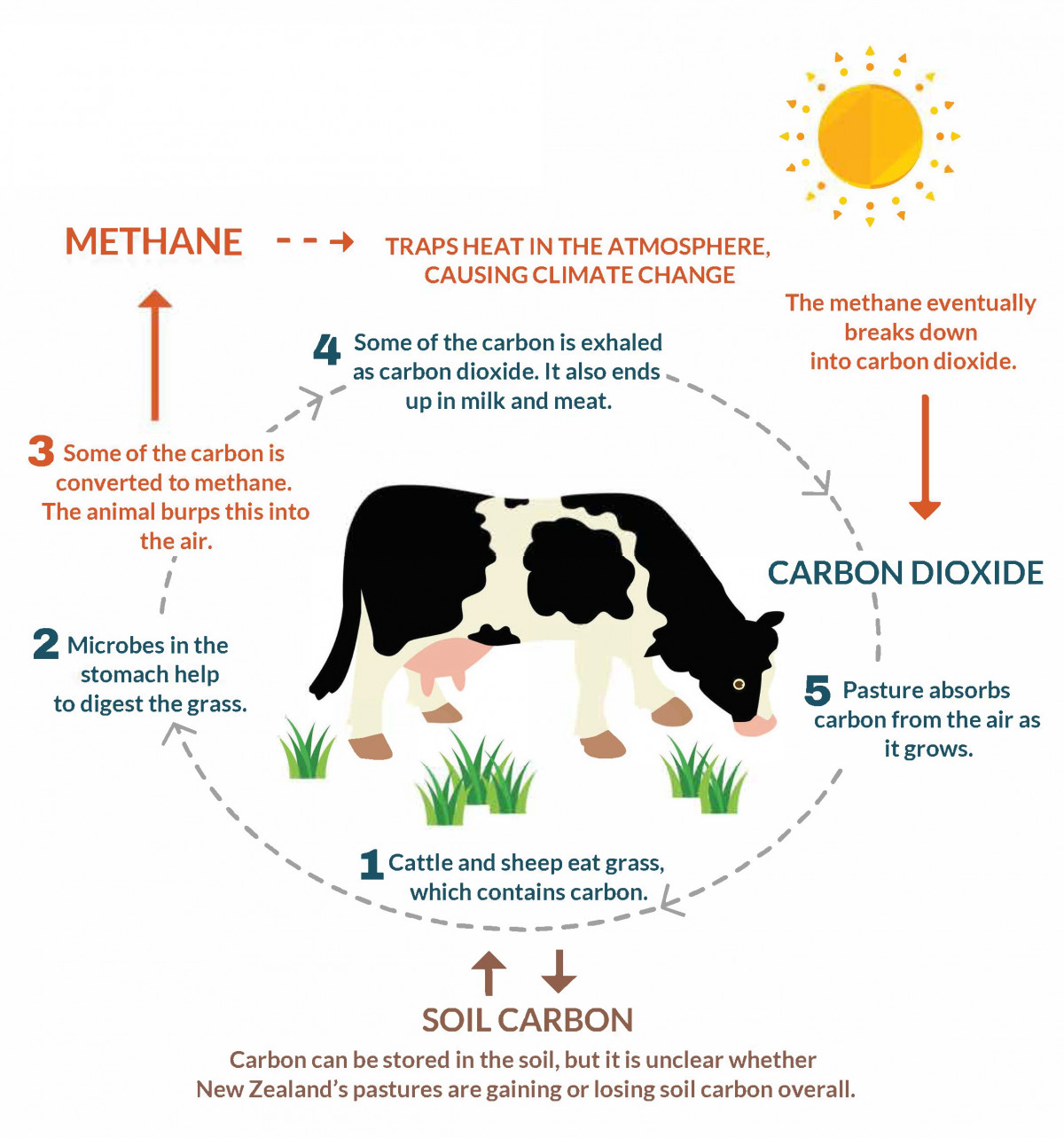Information on greenhouse gas emissions from agriculture.
Nearly half of New Zealand’s greenhouse gas emissions come from agriculture.
The main source of agriculture emissions is methane from livestock digestive systems. It makes up almost three quarters of our agriculture emissions. Our next largest source is nitrous oxide from nitrogen added to soils, followed by manure management.
Livestock such as cattle, sheep and deer produce methane, as shown in the diagram below.


See also the infographic: How methane from livestock contributes to climate change [PDF, 169 KB]
Nitrous oxide emissions occur when nitrogen is added to land. The two biggest sources are urine and dung from grazing livestock, and nitrogen fertilisers. Most of the emissions come directly from the soils after the nitrogen has been added. But they can also arise from indirect pathways. One of these indirect pathways is volatilisation. In this process, after nitrogen is added to land some of it volatilises (evaporates or sublimates) into the air. A fraction of this volatilised nitrogen returns to the ground during rainfall and is then re-emitted as nitrous oxide. The other indirect pathways are leaching and runoff.
The majority of emissions from manure management are methane, produced during the storage and treatment of manure, and from manure spread on pasture. A small amount of nitrous emissions are also produced during the storage and treatment of manure.
Carbon can be stored long term in the soil. This has raised the question about whether New Zealand’s pastures are storing carbon, and if soil carbon could help to offset our greenhouse gas emissions. Soil carbon is an ongoing area of research, and it is currently unclear whether New Zealand’s pastures are gaining or losing carbon overall.
For agricultural grasslands, only the effect of land-use changes on soil carbon is currently estimated. For example, where forest land is converted to grassland we can estimate the changes in soil carbon that took place. But if the land-use of the agricultural grassland doesn’t change, no changes in soil carbon are estimated. This is because changes in soil carbon happen slowly and are difficult to detect.
The capacity to increase soil carbon varies greatly around the world. Compared to other countries, New Zealand’s soil carbon content is relatively high in many places. So the ability of our soil to store more carbon may be limited. It is also challenging to measure and monitor. Stocks of soil carbon can take a long time to build up. They can be lost very quickly through circumstances outside of farmers' control (such as droughts).
For more information see Soil carbon [New Zealand Agricultural Greenhouse Gas Research Centre website].
See more on...
Agriculture emissions and climate change
April 2023
© Ministry for the Environment